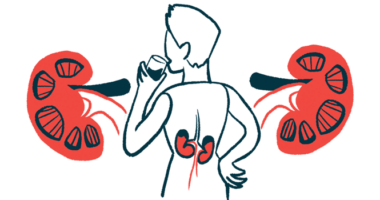Fabry GLA gene mutations detected in Parkinson’s patients: Study
Findings add to evidence for genetic link between diseases

Researchers detected a mutation in the GLA gene, which is defective in Fabry disease patients, in people with Parkinson’s disease, a study revealed.
Parkinson’s patients who carried this mutation showed signs of Fabry, particularly affecting the heart and nervous system.
The findings follow a previous report that found this same GLA mutation in people with Parkinson’s. Unlike patients in this new study, however, patients in the previous study did not show Fabry signs.
The study, “Morbus Fabry and Parkinson’s Disease—More Evidence for a Possible Genetic Link,” was published in the journal Movement Disorders.
Fabry is caused by mutations in the GLA gene, leading to a deficiency in the alpha-galactosidase A (alpha-Gal A) enzyme. This enzyme breaks down fatty globotriaosylceramide (Gb3 and lyso-Gb3) inside lysosomes, the cell’s recycling centers. Without alpha-Gal A, Gb3 accumulates to toxic levels and causes damage to tissue and organs.
Gaucher disease is a similar lysosomal condition that arises from mutations in the GBA gene. These mutations lead to a lack of beta-glucocerebrosidase, an enzyme that breaks down a different fatty molecule called glucosylceramide (GL1). As in Fabry, GL1 builds up to harmful levels and causes damage.
Search for a genetic link
GBA gene mutations are the most commonly known genetic risk factor for Parkinson’s disease, a neurodegenerative condition marked by motor symptoms such as slow movement and tremors. However, little is known about a potential relationship between Fabry and Parkinson’s.
To learn more, scientists at the University of Ulm, Germany, examined the frequency of GLA gene mutations in 252 Parkinson’s patients, ages 33-93, 60% of whom were men.
Genetic analysis detected 96 GLA variants in 57 individuals. None of the variants was officially classified as pathogenic (disease-causing) or likely pathogenic for Fabry.
Instead, two variants of uncertain significance predicted to alter the alpha-Gal A enzyme were detected in four individuals. The team said a mutation called D313Y caught their attention. The frequency of this mutation was 0.85% in this study, but 0.30% in the general world population and 0.45% in the non-Finnish European population.
All three Parkinson’s patients who carried the D313Y mutation showed signs of Fabry, mainly involving the heart and central nervous system (brain and spinal cord). The mean activity of the alpha-Gal A enzyme was lower among these patients than in the study population (2.3 micromolar per hour vs. 3.4 micromolar per hour), yet they all had normal levels of lyso-Gb3.
According to recent literature, D313Y may cause Fabry-related nervous system manifestations associated with milder disease and later disease onset, “a hypothesis that our data support,” the researchers wrote.
The data were pooled with those from the previous study, which genetically screened 236 Parkinson’s patients with abnormal alpha-Gal A activity levels. Four women carried the D313Y variant.
Altogether, the frequency of D313Y was significantly higher in Parkinson’s patients than in the general world population and the non-Finnish European population.
“We believe our study is meaningful because it highlights anew the possible link between the GLA [D313Y] variant and [Parkinson’s], the scientists wrote. “Further studies involving larger cohorts are required because the possible pathogenetic role might influence monitoring of [D313Y] variant carriers and decisions involving potential enzyme replacement therapy.”






